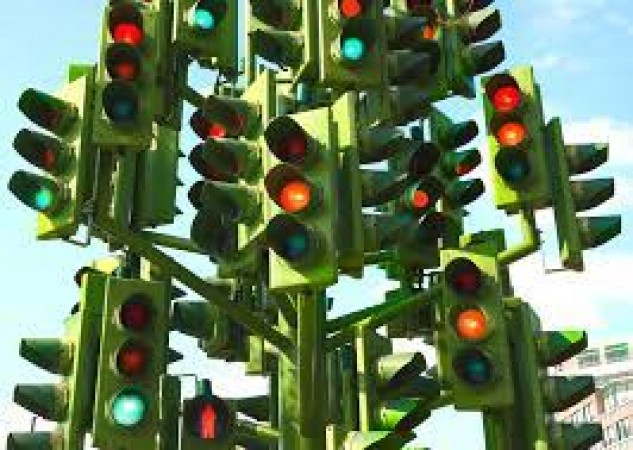
Have you ever pondered why traffic lights only display three colors - red, yellow, and green? These ubiquitous signals are more than just arbitrary choices; they're meticulously designed to convey crucial information to drivers and pedestrians. Let's delve into the rationale behind this iconic trio of colors and understand why they are the cornerstone of traffic management systems worldwide.
Traffic congestion has plagued urban areas since the advent of automobiles. In the late 19th century, as cities grew and streets became busier, the need for effective traffic control became evident.
The first electric traffic light, invented by Lester Wire in 1912, featured only two colors: red and green. It resembled a railway signal, with red indicating "stop" and green signaling "proceed."
As traffic volumes surged, authorities recognized the need for an intermediary signal between "stop" and "go" to enhance safety and efficiency. Thus, the yellow light was introduced, serving as a warning or transitional phase between red and green.
Yellow holds a critical role in traffic control, providing drivers with a brief window to prepare for an impending change in movement. It signals caution, prompting drivers to slow down and prepare to either stop or proceed.
Red is universally recognized as a symbol of danger and cessation. In traffic lights, it commands vehicles to halt, ensuring orderly flow and preventing collisions at intersections.
Yellow serves as a transitional color, indicating that the current signal is about to change. It prompts drivers to exercise caution, preparing them for an upcoming stop or clearance to proceed.
Green signifies permission to proceed, indicating that it's safe for vehicles to move forward. It promotes the smooth flow of traffic, minimizing delays and optimizing efficiency.
The choice of colors in traffic lights isn't arbitrary; it's rooted in psychology. Red's association with danger, yellow's link to caution, and green's connotation of safety are deeply ingrained in human perception, making them highly effective signals.
The distinctiveness of red, yellow, and green enhances their visibility, even in adverse weather conditions or low-light environments. This ensures that traffic signals remain conspicuous and easily discernible by drivers and pedestrians alike.
The red-yellow-green color scheme has become a global standard for traffic control, adopted by nations worldwide. This uniformity facilitates comprehension for travelers and expedites adaptation to different traffic systems.
While the basic framework of traffic lights remains consistent, variations exist to accommodate specific scenarios, such as pedestrian crossings, railway intersections, and emergency vehicle prioritization.
In conclusion, the utilization of red, yellow, and green in traffic lights is a testament to the intersection of functionality, psychology, and global standardization. These colors aren't merely aesthetic choices; they're strategic signals designed to regulate traffic flow, enhance safety, and streamline urban mobility. By understanding the rationale behind each color, drivers and pedestrians can navigate roadways with greater awareness and adherence to traffic regulations.
This mistake related to food can make you sick!
Caution! Eating this food item immediately after eating eggs can cause harm to the body
Eat these things in case of diarrhea, you will get relief soon